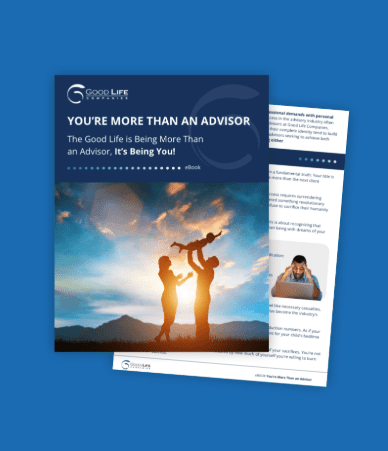Deciding whether to become an independent financial advisor is one of the biggest and potentially profitable decisions you can make in your career. Independence brings higher payouts, more ownership of your time, and greater flexibility to serve your clients. But the path can feel uncertain, and many advisors wrestle with the same concerns before making the leap.
Here are some of the most common questions financial advisors ask when considering independence:
- What’s the hardest part about becoming an independent financial advisor?
The biggest hurdle for most advisors isn’t economics or even logistics; it’s the fear of the unknown. When you go independent, you’re not just an advisor anymore. You’re also a small business owner. That means learning to read profit-and-loss statements, building operational efficiencies, managing staff, and making decisions about everything from office space to technology vendor contracts.
It can feel like a leap of faith, but it should be more of a bridge; strategic and built to carry you toward something better. The key is to surround yourself with a transition team that provides expertise, resources, and infrastructure to get you up and running quickly. The right support makes you feel less like you’re jumping into the unknown and more like you’re stepping onto firm ground.
- How do I explain the value of independence to my clients, so they’ll follow me?
This is often the most important question advisors have, because your success depends on your clients making the move with you. On average, advisors who transition see 70–90% of assets transfer, but where you land in that range depends heavily on communication.
Here’s what works:
- Focus on how it benefits the client. Emphasize that your freedom gives you greater access to investment options, more flexibility in service, and the ability to fully act in their best interest as a fiduciary.
- Communicate consistently. Don’t rely on a single phone call or meeting. Use the transition as an opportunity to establish a proactive communication rhythm. Keep clients updated, reinforce their importance, and highlight the service enhancements they can expect.
- Be transparent. Clients want to know what’s changing and, more importantly, what’s not. Reassure them that their relationship with you remains the foundation, and independence simply provides increased flexibility to better serve their unique needs.
Most transfers happen in the first 90 days. Getting this step right is critical, and the right preparation will give you a higher probability of success.
- How do I define my brand and target market as an independent advisor?
One of the first steps in independence is answering: Who am I as a business, and who do I serve? Many advisors struggle with this because, in a wirehouse or regional firm, branding is predetermined. Independence requires you to define your mission, values, and client focus.
Think about:
- What type of clients energize you? (Executives, business owners, retirees, families, etc.)
- What common traits do your best clients share? Interests, professions, income ranges, financial goals?
- How do you want to be positioned in the marketplace?
Once defined, these guide everything from your logo, website, and marketing to the service experience you deliver. And here’s a truth that surprises many advisors: if you try to market to everyone, you may find your message fails to connect with anyone. Clarity creates connection.
4. What expenses should I expect when I go independent?
Independence comes with startup and ongoing costs like office setup, marketing, staffing, technology, and compliance support, among others. As a small business owner, you’ll need to understand your balance sheet and make decisions about where to spend (and where to save).
The good news? You also control those decisions. Want to outsource compliance or bookkeeping? You can. Prefer to hire in-house talent to scale faster? That’s your call.
- How can I make sure I continue to grow as an independent advisor?
Independence isn’t a one-time event; it’s an ongoing journey. Your short-term goals will evolve into long-term strategies. Growth can come from multiple directions: adding advisors to your team, expanding into new niches, upleveling your marketing, or even acquiring other practices.
The key is to stay intentional. Don’t just replicate what you did inside a wirehouse model. Use independence to build a business that reflects your vision, then revisit that vision often to make sure you’re still on track.
Now ask yourself, “Am I ready to transition to an independent model?”
Independence isn’t just about higher payouts or a new logo. It’s about building a business that reflects who you are, how you want to serve clients, and the legacy you want to leave. The journey comes with challenges, but with the right partner and a clear game plan, those challenges turn into
opportunities.
If you’re exploring independence and want to talk through your options, reach out to our team at independence@goodlifeco.com.
| TN 788476-01-01 |








